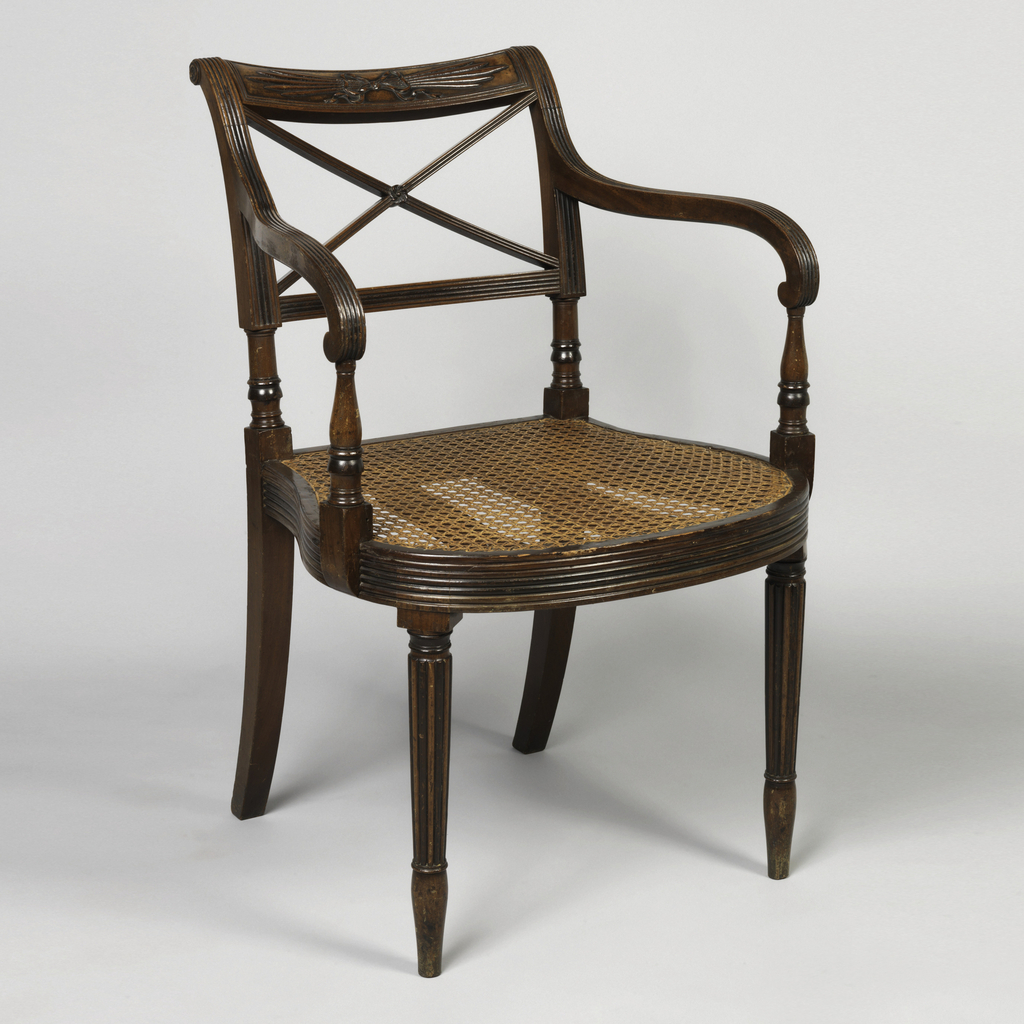There are 3 other images of this object. This image is in the public domain (free of copyright restrictions), and as such we offer a high-resolution image of it. See our image rights statement.
See more objects with the color darkslategrey darkolivegreen sienna or see all the colors for this object.
Object Timeline
|
1927 |
|
|
2001 |
|
|
2012 |
|
|
2015 |
|
|
2025 |
|
Chair (USA)
This is a chair. It is dated ca. 1812 and we acquired it in 1927. Its medium is mahogany, caning. It is a part of the Product Design and Decorative Arts department.
In the United States’ first decades as a nation, Federal-style furniture, a spare and light neoclassical style, emerged and remained popular until around 1815. New York master cabinetmaker Duncan Phyfe, whose stylistic variances appear on this chair, used Greek and Roman classical forms that could be found in pattern books published overseas, such as Thomas Sheraton’s Cabinet Maker and Upholsterer’s Drawing Book (London, 1793). This chair contains many Sheraton–inspired forms: a straight-lined criss-cross backsplat, straight front legs, subtly curved, klismos-like back legs, and overall symmetrical design. Although it is thought that a contemporary of Phyfe, and not Phyfe himself, made this chair, the master cabinetmaker’s standard deviations are present: reeding on the backsplat crossbars with a central carved rosette, and the so-called thunderbolt or wheat design tied with a bow on the back top panel, a Phyfe hallmark. The thunderbolt might resemble the Greek god Zeus to symbolize New York’s rapid growth, energy, and power as an expanding mercantile city. The use of cane seating and Louis XVI-style front legs are unlike Phyfe, however. When in use, the seat likely would have been covered with a loose cushion.
This object was
bequest of
Mrs. John Innes Kane.
It is credited Bequest of Mrs. John Innes Kane.
Its dimensions are
H x W x D: 80.5 x 54.3 x 54 cm (31 11/16 x 21 3/8 x 21 1/4 in.)
Cite this object as
Chair (USA); mahogany, caning; H x W x D: 80.5 x 54.3 x 54 cm (31 11/16 x 21 3/8 x 21 1/4 in.); Bequest of Mrs. John Innes Kane; 1927-20-4
